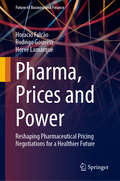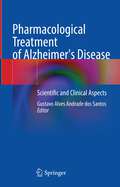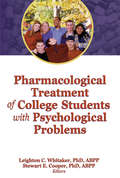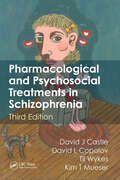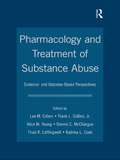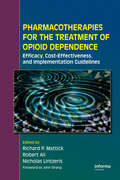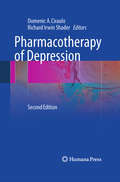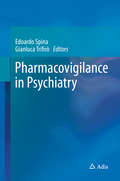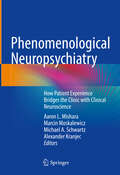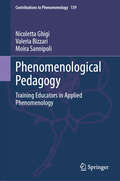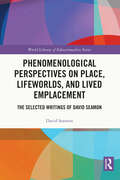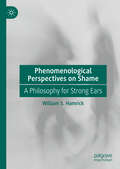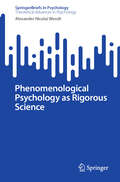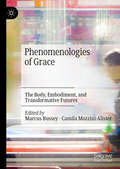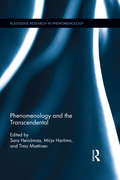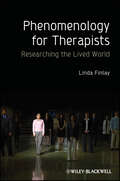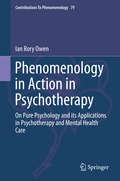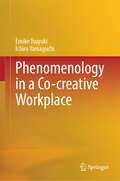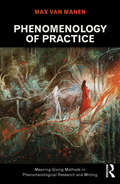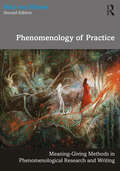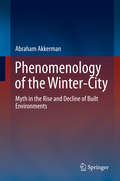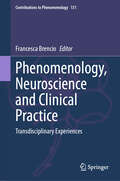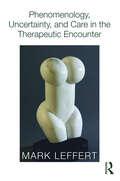- Table View
- List View
Pharma, Prices and Power: Reshaping Pharmaceutical Pricing Negotiations for a Healthier Future (Future of Business and Finance)
by Horacio Falcão Rodrigo Gouveia Hervé LamarqueThis book brings a negotiation perspective to healthcare. It opens the hidden box of pricing and reimbursement (P&R) negotiations, showing their huge impact on global healthcare systems and how they could be drastically improved. The authors offer a comprehensive and unique negotiation-based analysis of healthcare systems worldwide, highlighting the historical, structural, and ethical challenges that shape P&R negotiations. From the role of governments and health insurers to the intricate dynamics between healthcare providers and users, the authors examine the forces driving healthcare costs and access. With a unique blend of theoretical expertise and practical experience, the authors propose a paradigm shift toward value-oriented negotiations. They show how to move away from adversarial win-lose tactics to collaborative and transparent negotiations.
Pharmacological Treatment of Alzheimer's Disease: Scientific and Clinical Aspects
by Gustavo Alves Andrade dos SantosAlzheimer’s disease is the most prevalent form of dementia. Although it was discovered about a century ago, the first drugs applied in treatment were only introduced in therapy in the last 30 years.This book focuses on the clinical pharmacology of drugs that aim to delay the progression of Alzheimer’s disease, such as anticholinesterases and glutamate receptor antagonists, as well as treatment for the behavioral changes caused by the progression of the disease: antidepressants, antipsychotics, anxiolytics, and mood stabilizers.In addition, it describes important information about the pathophysiology and diagnostic methods of Alzheimer’s disease, emergency situations conditioned by the dementia process, and presents new perspectives for the treatment of Alzheimer’s disease. The ten chapters cover topics such as mechanism of action, dosage regimen, adverse reactions, drug interactions, toxicity profiles, among other information of clinical relevance. The work comprises evidence-based studies, providing a valuable resource for analyzing, prescribing and monitoring patients being treated for Alzheimer’s disease.Written by experts with solid professional experience, this book will appeal to pharmacologists, geriatricians, neurologists, psychiatrists, biomedical clinicians, and other healthcare professionals.
Pharmacological Treatment of College Students with Psychological Problems
by Leighton C. Whitaker Stewart E. CooperGet valuable insights into best practices and procedures for treatment Mental health practitioners across the country are increasingly treating students by combining the use of psychotropic medication with psychotherapy. Pharmacological Treatment of College Students with Psychological Problems explores in detail this uncritically accepted exponential expansion of the practice. Leading psychiatrists, psychologists, and social workers discuss the crucial questions and problems encountered in this widespread practice, and also present specific and differing models of combined therapy. This book critically examines several of the key issues, practices, and competing perspectives. Professionals working in college mental health are provided with valuable insights into best practices and procedures in split and integrated treatment. Various clinicians beyond the psychiatric field are prescribing psychotropic medications with increasing frequency. Pharmacological Treatment of College Students with Psychological Problems presents a wide range of viewpoints on this issue, offering evidence, arguments, and recommendations to clearly illustrate the need for increased attention to the use of psychotropic medications and show how psychotherapy may be safer and more beneficial. Chapters include discussions on withdrawing from medication successfully, long term perturbation effects, and differing models of combined therapy in practice. This resource is comprehensively referenced. Topics in Pharmacological Treatment of College Students with Psychological Problems include: identification of the key issues and practices of combining psychotropic medication with counseling in treatment elements of two separate university counseling centers and how they provide combined treatment emerging research on perturbation effects of use of psychotropic medications best practices in the combined treatment in college settings key unresolved questions that need further research bringing a more sophisticated level in the practice of combined treatment with college students Pharmacological Treatment of College Students with Psychological Problems is a valuable resource for all professionals from seasoned professionals to beginning practicum students.
Pharmacological and Psychosocial Treatments in Schizophrenia
by David J. Castle Kim T. Mueser Til Wykes David L. CopolovPharmacological and Psychosocial Treatments in Schizophrenia provides a succinct clinical overview of key areas pertinent to the holistic treatment of people with schizophrenia and, in particular, puts firmly back onto the agenda the importance of psychosocial treatments.The latest data concerning the newer antipsychotic agents and clinical guidelines for their use are reviewed. The real emphasis, however, is on the psychosocial interventions for specific aspects of schizophrenia symptomatology and disability that have been shown to offer major benefits to recovery in the disorder, and yet have failed to have a high profile in the literature, as more effective biological treatments have become available.This book offers practical guidance on effective strategies for use in both clinical settings and in the family context, placing the patient (and their family) once again at the centre of therapeutic endeavours. Encouraging professionals to offer a broader therapeutic approach, this book will offer real hope to therapists, patients and families of what can be achieved if psychosocial interventions complement the many psychopharmacological treatments available today.Key topics include: female patients, treatment resistance, the substance abuser patient, family intervention, helping the patient at work, managing violent behaviour, first episode psychosis and rating scales in schizophrenia.
Pharmacology and Treatment of Substance Abuse: Evidence and Outcome Based Perspectives (Counseling and Psychotherapy)
by Jr. Lee M. Cohen Frank L. Collins Alice M. Young Dennis E. McChargue Thad R. Leffingwell Katrina L. CookGiven the prevalence of substance abuse in general clinical populations, it is important for healthcare providers to have knowledge and skill in the treatment of these problems. Evidence-Based Practice (EBP) involves the integration of the best evidence with clinical expertise and patient values. This text is designed as a bridge for practitioners that will provide up-to-date evidence reviews as well as information on how to best keep up with emerging trends in the field. The editors have gathered expert authors to provide a much needed summary of the current status of the evidence based practice for both the assessment and treatment of specific substance use disorders.
Pharmacotherapies for the Treatment of Opioid Dependence: Efficacy, Cost-Effectiveness and Implementation Guidelines
by Richard P. Mattick Robert Ali Nicholas LintzerisThe most comprehensive text of its kind, this book addresses both the management of opioid withdrawal and opioid maintenance therapy, and combines up-to-date reviews of the scientific literature with evidence-based clinical guidelines for all of the relevant pharmacotherapies. A unique work, Pharmacotherapies for the Treatment of Opioid Dependence
Pharmacotherapy of Depression
by Richard Irwin Shader Domenic A. CirauloComprehensive and state of the art, the second edition of Pharmacotherapy of Depression offers major revisions of every chapter and the addition of new chapters by expert contributors. The first chapter reviews the neurobiology of depression, which lays the groundwork for understanding the mechanisms of action of antidepressants. In the next chapter, a review of the general principles guiding the diagnosis and medication treatment of unipolar depression is provided. The clinical pharmacology of antidepressants is reviewed in some detail, supplemented by tables that provide information on dosing, indications, and metabolism. Augmentation strategies are reviewed, including the use of non-traditional agents. The chapters that follow next address the use of antidepressants in special populations, such as the elderly and depressed individuals with psychosis, bipolar disorder, substance abuse, and post traumatic stress disorder. The complex issues involving the diagnosis and treatment of depression during pregnancy is thoroughly reviewed in Chapter 8 and provides a synthesis of the scientific literature in the area, one that is noted for contradictory and controversial findings, as well as guidelines for prescribing. The next chapter then provides an overview of the treatment of depression in the pediatric population, highlighting clinical concerns such as suicide risk. The book concludes with two chapters at the interface of medicine and psychiatry in the treatment of mood disorders: managing depression in primary care settings and depression associated with medical illnesses. The outstanding clinician-scientists who have contributed to this volume are all leaders in their fields and represent a broad spectrum of renowned institutions. A timely contribution to the literature, The Pharmacotherapy of Depression, Second Edition, offers busy clinicians from many disciplines a strong scientific foundation that seamlessly transitions into practical recommendations for clinical practice. The result is another gold-standard guide to the safe and effective use of the latest antidepressant medications.
Pharmacovigilance in Psychiatry
by Edoardo Spina Gianluca TrifiròThe first authoritative textbook specifically addressing issues of the field, this book delivers a focused discussion on several themes in psychiatry while providing a sound background on pharmacovigilance. Internationally-recognised researchers, clinicians and pharmacovigilance experts contributed to this textbook, giving it the benefit of different perspectives and years of experience. Pharmacovigilance in psychiatry provides a thorough introduction to this field but goes on to explore advanced themes such as methodologies and resources used for pharmacovigilance in psychiatry, challenges as well as most recent developments to this field, making it suitable for under-graduates, graduate and post-doctoral students and persons working pharmacovigilance who seek to broaden their knowledge on this subject.
Phase Theory
by Barbara CitkoPhase Theory is the latest empirical and conceptual innovation in syntactic theory within the Chomskyan generative tradition. Adopting a cross-linguistic perspective, this book provides an introduction to Phase Theory, tracing the development of phases in minimalist syntax. It reviews both empirical and theoretical arguments in favor of phases, and examines the role phases play at the interface with semantics and phonology. Analyzing current phasehood diagnostics, it applies them in a systematic fashion to a broad range of syntactic categories, both phases and non-phases. It concludes with a discussion of some of the more contentious issues in Phase Theory, involving cross-linguistic variation with respect to phasehood and the dynamic versus static nature of phases.
Phenomenological Neuropsychiatry: How Patient Experience Bridges the Clinic with Clinical Neuroscience
by Marcin Moskalewicz Michael A. Schwartz Aaron L. Mishara Alexander KranjecThis innovative book offers a multidimensional exploration of the epistemological foundations of psychiatry and its major disorders. By emphasizing the importance of phenomenology in unravelling the intricate interplay between basic categories of human experience and neurobiological processes, it advocates for a shift in both psychiatric research and clinical practice. Phenomenological Neuropsychiatry presents psychiatry as a hybrid discipline that synthesizes subjective mental experiences with objective neuroscientific findings and forms an integrative and interdisciplinary structure that provides a dialectical bridge between understanding, compassion, and explanation. The first section of the book presents the lived experience of psychosis and argues for a more inclusive approach to mental health issues. The second section examines the ways in which psychiatric knowledge is constructed and the unique challenges posed by combining understanding and explanation of mental disorders. Section three sheds light on how disruptions in bodily experiences, memory processes, and self-perception can contribute to the development and manifestation of psychiatric issues. The following section discusses disorders of mood and anxiety, including the phenomena of depression, obsessions, and depersonalization. The fifth and final section provides an in-depth examination of psychotic disorders. It covers a range of topics, such as timing, intentionality, self-monitoring of action in schizophrenia, and the neurobiology of prodromal psychosis. As a singular work dedicated to revitalizing and advancing cross-fertilization between psychiatry and phenomenology, this groundbreaking book clears the foggy operationalized clusters of mental symptoms that may obscure diagnosis and treatment and argues for systematic integration of patient subjectivity and collaboration in clinical research. It features an authorship of the leading clinicians and thinkers from throughout the world in psychiatry, psychology, neuroscience, social sciences, and philosophy. Phenomenological Neuropsychiatry: How Patient Experience Bridges the Clinic with Clinical Neuroscience is a major contribution to the clinical literature and a must-read for psychiatrists, neurologists, psychologists, and professionals and students from other disciplines concerned with absorbing a deeper understanding of psychiatric disorders.
Phenomenological Pedagogy: Training Educators in Applied Phenomenology (Contributions to Phenomenology #139)
by Valeria Bizzari Nicoletta Ghigi Moira SannipoliThis volume covers the application of phenomenology not only to psychology and psychiatry but precisely to pedagogy and the training of educators. It fills a gap in offering a unique resource which combines both theory and practice. Through an interdisciplinary means, this book provides new theories and applications of phenomenological pedagogy at all levels of education and with a unique focus on autism and special educational needs. It proposes a shift in the paradigm and treatment: from a neuro-cognitivist approach at the present core of most pedagogical theories to a phenomenological and enactivist perspective on subjectivity. It appeals to students, researchers, and practitioners working in phenomenology, psychology and education.
Phenomenological Perspectives on Place, Lifeworlds and Lived Emplacement: The Selected Writings of David Seamon
by David SeamonPhenomenological Perspectives on Place, Lifeworlds and Lived Emplacement is a compilation of seventeen previously published articles and chapters by David Seamon, one of the foremost researchers in environmental, architectural, and place phenomenology. These entries discuss such topics as body-subject, the lived body, place ballets, environmental serendipity, homeworlds, and the pedagogy of place and placemaking. The volume's chapters are broken into three parts. Part I includes four entries that consider what phenomenology offers studies of place and placemaking. These chapters illustrate the theoretical and practical value of phenomenological concepts like lifeworld, natural attitude, and bodily actions in place. Part II incorporates five chapters that aim to understand place and lived emplacement phenomenologically. Topics covered include environmental situatedness, architectural phenomenology, environmental serendipity, and the value of phenomenology for a pedagogy of place and placemaking. Part III presents a number of explications of real-world places and place experience, drawing on examples from photography (André Kertész’s Meudon), television (Alan Ball’s Six Feet Under), film (John Sayles’ Limbo and Sunshine State), and imaginative literature (Doris Lessing’s The Four-Gated City and Louis Bromfield’s The World We Live in). Seamon is a major figure in environment-behavior research, particularly as that work has applied value for design professionals. This volume will be of interest to geographers, environmental psychologists, architects, planners, policymakers, and other researchers and practitioners concerned with place, place experience, place meaning, and place making.
Phenomenological Perspectives on Shame: A Philosophy for Strong Ears
by William S. HamrickThis book utilizes Maurice Merleau-Ponty’s fascinating philosophy of embodiment to cast further light on the incredibly rich and complex phenomenon of shame. The philosopher himself made only scattered references to shame, but both his early phenomenology and his later phenomenological ontology do provide unique illumination of the phenomenon. The book demonstrates how Merleau-Ponty’s work is relevant to those of certain other thinkers in the analytic tradition.
Phenomenological Psychology as Rigorous Science (SpringerBriefs in Psychology)
by Alexander Nicolai WendtExperimental psychology depends on theoretical and methodological foundations. Addressing these foundations is not always trivial and requires a shift in epistemological perspective. Phenomenology can provide a framework that helps to discuss the possibilities and challenges of the discipline. This book provides a historical overview of the phenomenological movement as well as a systematic introduction to the research approaches that are known as ‘phenomenological psychology’. The central claim is that the phenomenological discourse can increase the conceptual, descriptive, and methodological rigor in psychology. The purpose of the book is to facilitate the dialogue between phenomenology and cognitive sciences. It is meant to be a guide for interested scholars but also offers new ideas for experts in the field.
Phenomenologies of Grace: The Body, Embodiment, and Transformative Futures
by Marcus Bussey Camila Mozzini-AlisterThis book explores the place of the body and embodied practices in the production and experience of grace in order to generate transformative futures. The authors offer a range of phenomenologies in order to move the philosophical anchoring of phenomenology from an abstracted European tradition into more open and complex experiential sets of understandings. Grace is a sticky word with many layers to it, and the authors explore this complexity through a range of traditions, practices, and autobiographical accounts. The goal is to open a grace-space for reflection and action that is both futures-oriented and enlivening.
Phenomenology and the Extreme Sport Experience (Routledge Research in Sport, Culture and Society)
by Eric Brymer Robert SchweitzerUnderstanding the motivations behind those who partake in extreme sports can be difficult for some. If the popular conception holds that the incentive behind extreme sports participation is entirely to do with risking one’s life, then this confusion will continue to exist. However, an in-depth examination of the phenomenology of the extreme sport experience yields a much more complex picture. This book revisits the definition of extreme sports as those activities where a mismanaged mistake or accident would most likely result in death. Extreme sports are not necessarily synonymous with risk and participation may not be about risk-taking. Participants report deep inner transformations that influence world views and meaningfulness, feelings of coming home and authentic integration as well as a freedom beyond the everyday. Phenomenologically, these experiences have been interpreted as transcendent of time, other, space and body. Extreme sport participation therefore points to a more potent, life-enhancing endeavour worthy of further investigation. This book adopts a broad hermeneutic phenomenological approach to critique the assumed relationship to risk-taking, the death wish and the concept of "No Fear" in extreme sports, and repositions the experience in a previously unexplored manner. This is valuable reading for students and academics interested in Sports Psychology, Social Psychology, Health Psychology, Tourism, Leisure Studies and the practical applications of phenomenology.
Phenomenology and the Transcendental (Routledge Research in Phenomenology)
by Mirja Hartimo Sara Heinämaa Timo MiettinenThe aim of this volume is to offer an updated account of the transcendental character of phenomenology. The main question concerns the sense and relevance of transcendental philosophy today: What can such philosophy contribute to contemporary inquiries and debates after the many reasoned attacks against its idealistic, aprioristic, absolutist and universalistic tendencies—voiced most vigorously by late 20th century postmodern thinkers—as well as attacks against its apparently circular arguments and suspicious metaphysics launched by many analytic philosophers? Contributors also aim to clarify the relations of transcendental phenomenology to other post-Kantian philosophies, most importantly to pragmatism and Wittgenstein’s philosophical investigations. Finally, the volume offers a set of reflections on the meaning of post-transcendental phenomenology.
Phenomenology for Therapists
by Linda FinlayThis book provides an accessible comprehensive exploration of phenomenological theory and research methods and is geared specifically to the needs of therapists and other health care professionals. An accessible exploration of an increasingly popular qualitative research methodologyExplains phenomenological concepts and how they are applied to different stages of the research process and to topics relevant to therapy practiceProvides practical examples throughout
Phenomenology in Action in Psychotherapy
by Ian Rory OwenThis book takes Edmund Husserl's phenomenology and applies it to help psychotherapy practitioners formulate complex psychological problems. The reader will learn about Husserl's system of understanding and its concepts that can point to first-person lived experience, and about the work of Husserl scholars who have developed a way to be precise about the experiences that clients have. Through exploring the connection between academic philosophy of consciousness and mental health, themes of biopsychosocial treatment planning, psychopathology of personality and psychological disorders, and the treatment of complex psychological problems all emerge. The author shows that Husserlian phenomenology can be used in the design of interventions for each client in a process called formulation. Once the intentionality of consciousness of an individual is understood, by asking simple questions, it becomes possible to define problematic experiences. This is a means of creating informed consent for treatment and it also makes it clear to clients what is happening for them, so helping them understand themselves and how they see the world. We also see how Husserl's phenomenology is a vehicle for psychotherapists to present their knowledge about the research literature of what has been found to be effective care. This volume applies the concepts and practices of phenomenology in a concrete way, relating them to the practice of therapy and showing the value of a qualitative approach to understanding mental processes and the nature of human beings as motivated by values, meanings and other conscious experiences. This is a readable text in simple language that condenses key aspects of Husserl's thinking in relation to the theory and practice of psychotherapy, and it is suitable for philosophers and practitioners of psychology, psychiatry, and the psychotherapies, including psychoanalysis.
Phenomenology in a Co-creative Workplace
by Ichiro Yamaguchi Emiko TsuyukiThis book introduces phenomenology to reveal how the atmosphere and relationships in the workplace are generated and how this affects creativity. In their daily work, people sometimes feel that "today's meeting was more exciting than expected" or that "everyone's motivation is down”. This unspoken workplace atmosphere has a significant impact on their work. But has enough thought been given to how this workplace atmosphere is created? Phenomenology reveals the basic structure of human relationships in the workplace. Are there any general rules that govern human interaction and the nature of relationships in that workplace? If these unspoken rules can be made explicit – clearly felt and spoken — people can work together to bring about a creative workplace in which individuals can maximize their abilities. The main point of the book is that human relationships are based on a two-layered structure: "emotional communication", which is rooted in human sensitivity and centers on sensation and emotion; and "verbal communication", which is based on shared intelligence and relies upon language and thought. The invisible layer of emotional communication is always at work as the foundation of verbal communication, creating what can be described as the "workplace atmosphere”. This book offers a new perspective on promoting creativity in the workplace by unraveling the principles behind the structure of workplace atmospheres.
Phenomenology of Practice: Meaning-Giving Methods in Phenomenological Research and Writing (Developing Qualitative Inquiry #13)
by Max Van ManenMax van Manen offers an extensive exploration of phenomenological traditions and methods for the human sciences. It is his first comprehensive statement of phenomenological thought and research in over a decade. Phenomenology of practice refers to the meaning and practice of phenomenology in professional contexts such as psychology, education, and health care, as well as to the practice of phenomenological methods in contexts of everyday living. Van Manen presents a detailed description of key phenomenological ideas as they have evolved over the past century; he then thoughtfully works through the methodological issues of phenomenological reflection, empirical methods, and writing that a phenomenology of practice offers to the researcher. Van Manen's comprehensive work will be of great interest to all concerned with the interrelationship between being and acting in human sciences research and in everyday life. Max van Manen is the editor of the series Phenomenology of Practice, https://www.routledge.com/series/PPVM
Phenomenology of Practice: Meaning-Giving Methods in Phenomenological Research and Writing (Phenomenology of Practice)
by Max van ManenMax van Manen offers an extensively updated edition of Phenomenology of Practice: Meaning-Giving Methods in Phenomenological Research and Writing to provide an eloquent, accessible, and detailed approach to practicing phenomenology. Phenomenology of practice refers to the meaning of doing phenomenology on experiences that are of significance to those in professional practice such as psychology, health care, education, and in contexts of ordinary living. A special feature of this update is the role of examples, anecdotes, stories, and vignettes, and the singularity of fictionalized empirical fragments in making the unknowable knowable. Accordingly, the various chapters are enriched with many intelligible examples of phenomenological essays and excursions on ordinary and extraordinary topics. These examples show that a phenomenological method can be engaged to explore virtually any lived experience or event. Max van Manen provides penetrating portrayals of depthful insights by brilliant phenomenologists. He identifies and distinguishes a variety of phenomenological orientations that are alive and current today. This book is relevant to scholars, students, and motivated readers interested in the originary meanings and methods of phenomenological human science enquiry. Max van Manen’s comprehensive work is of significance to all concerned with the interrelation between being and acting, thoughtfulness and tact, in human sciences research and the phenomenology of everyday life.
Phenomenology of the Winter-City
by Abraham AkkermanThis book explores how the weather and city-form impact the mind, and how city-form and mind interact. It builds on Merleau-Ponty's contention that mind, the human body and the environment are intertwined in a singular composite, and on Walter Benjamin's suggestion that mind and city-form, in mutual interaction, through history, have set the course of civilization. Bringing together the fields of philosophy, urbanism, geography, history, and architecture, the book shows the association of existentialism with prevalence of mood disorder in Northern Europe at the close of Little Ice Age. It explains the implications of city-form and traces the role of the myths and allegories of urban design as well as the history of gender projection onto city-form. It shows how urbanization in Northern Europe provided easier access to shelter, yet resulted in sunlight deprivation, and yielded increasing incidence of depression and other mental disorder among the European middle-class. The book uses the examples of Kierkegaard, Nietzsche, Dostoevsky and Kafka, to show how walking through the streets, squares and other urban voids became the informal remedy to mood disorder, a prominent trait among founders of modern Existentialism. It concludes by describing how the connection of anguish and violence is relevant to winter depression in cities, in North America in particular.
Phenomenology, Neuroscience and Clinical Practice: Transdisciplinary Experiences (Contributions to Phenomenology #131)
by Francesca BrencioThis book offers fundamental insights into three main fields of education and expertise: phenomenology, neuroscience, and clinical practice. The richness and pluralism of the contributions aim to overcome the reductionist and dualistic approach to mental health and shed new light on clinical practice. Designed as both an education tool for mental health professionals, and a theoretical investigation for philosophers on the use of phenomenology in clinical practice, this book highlights the need for a new direction on mental health, and more general, on human wellbeing. This volume aims to fill the gap between philosophers and mental health professionals on an educational level, in a space unique in its open and transdisciplinary approach. It appeals to students and researchers but also very much to professionals and clinicians in the field.
Phenomenology, Uncertainty, and Care in the Therapeutic Encounter
by Mark LeffertPhenomenology, Uncertainty and Care in the Therapeutic Encounter is the latest in a series of books where Mark Leffert explores the therapeutic encounter as both process and situation; looking for evidence of therapeutic effectiveness rather than accepting existing psychoanalytic concepts of theory or cure without question. Mark Leffert focuses on the uncomfortable fact that analysts and therapists can and do make many mistaken assumptions and false moves within their clinical practice, and that there is a tendency to ignore the significant levels of uncertainty in what they do. Beginning with a discussion of the phenomenology of the self and its relations with the world, the book moves on to explore the notion that interdisciplinary discourse both opens up possibilities in the therapeutic encounter but also imposes healthy constraints on what can be thought or theorized about psychoanalytically. Phenomenology, Uncertainty and Care in the Therapeutic Encounter contributes a new understanding of familiar material and brings a new focus to the care-giving and healing aspects of psychoanalysis and psychotherapy leading to a shift in the analyst’s identity from that of one who analyses to one who cares for and heals. This book will be of interest to Psychoanalysts and psychotherapists, neuroscientists and academics in the fields of psychiatry, comparative literature and literature and the mind.
